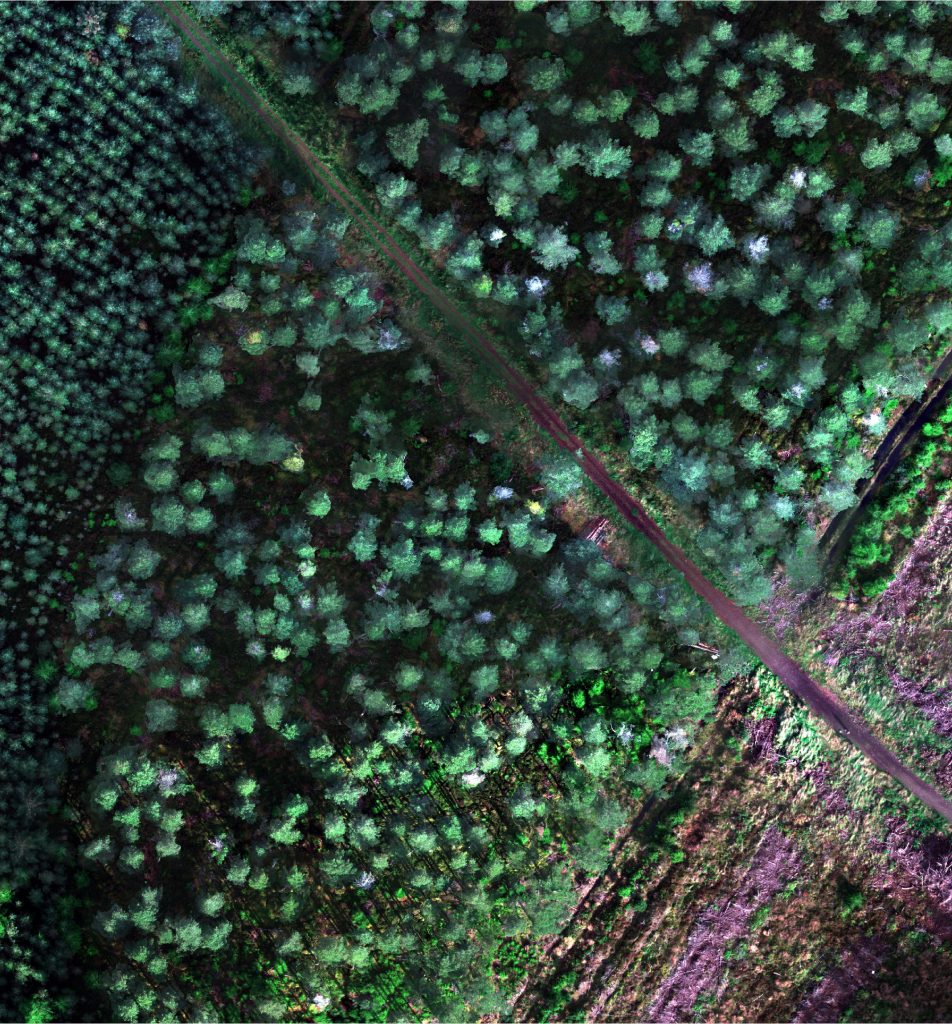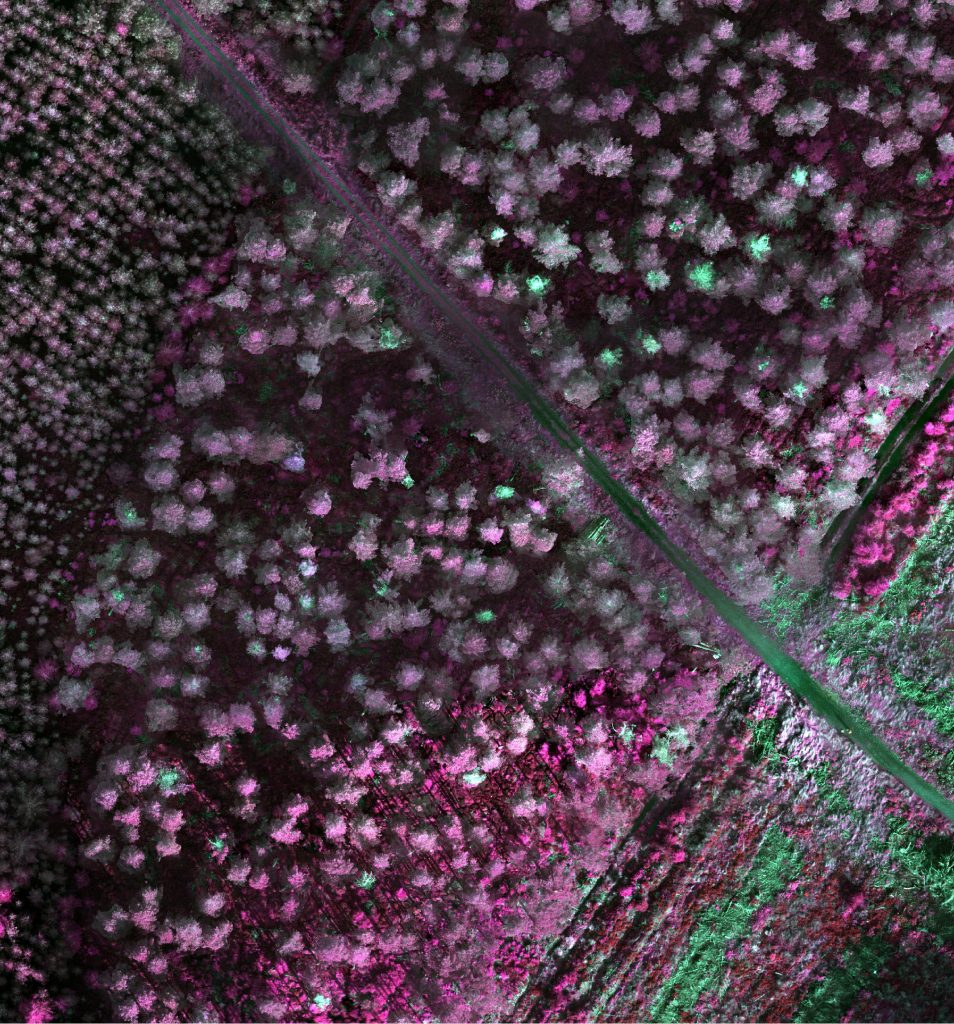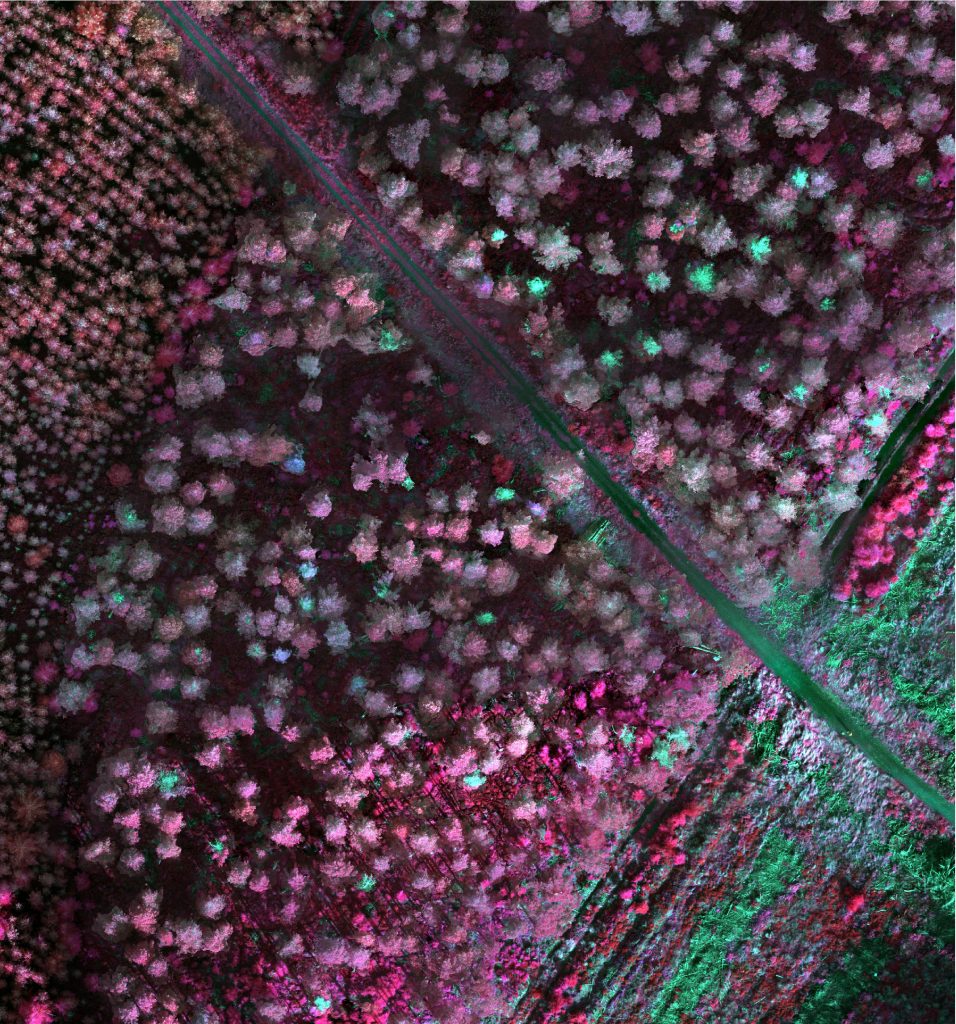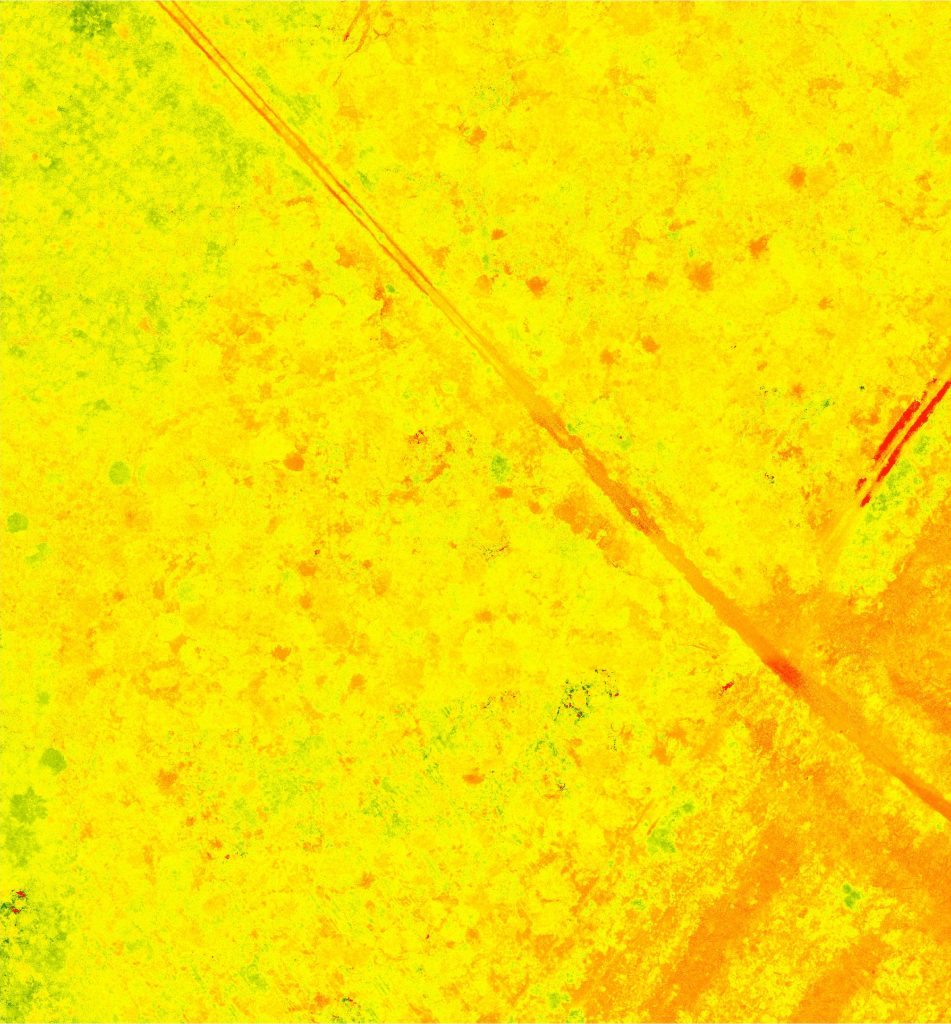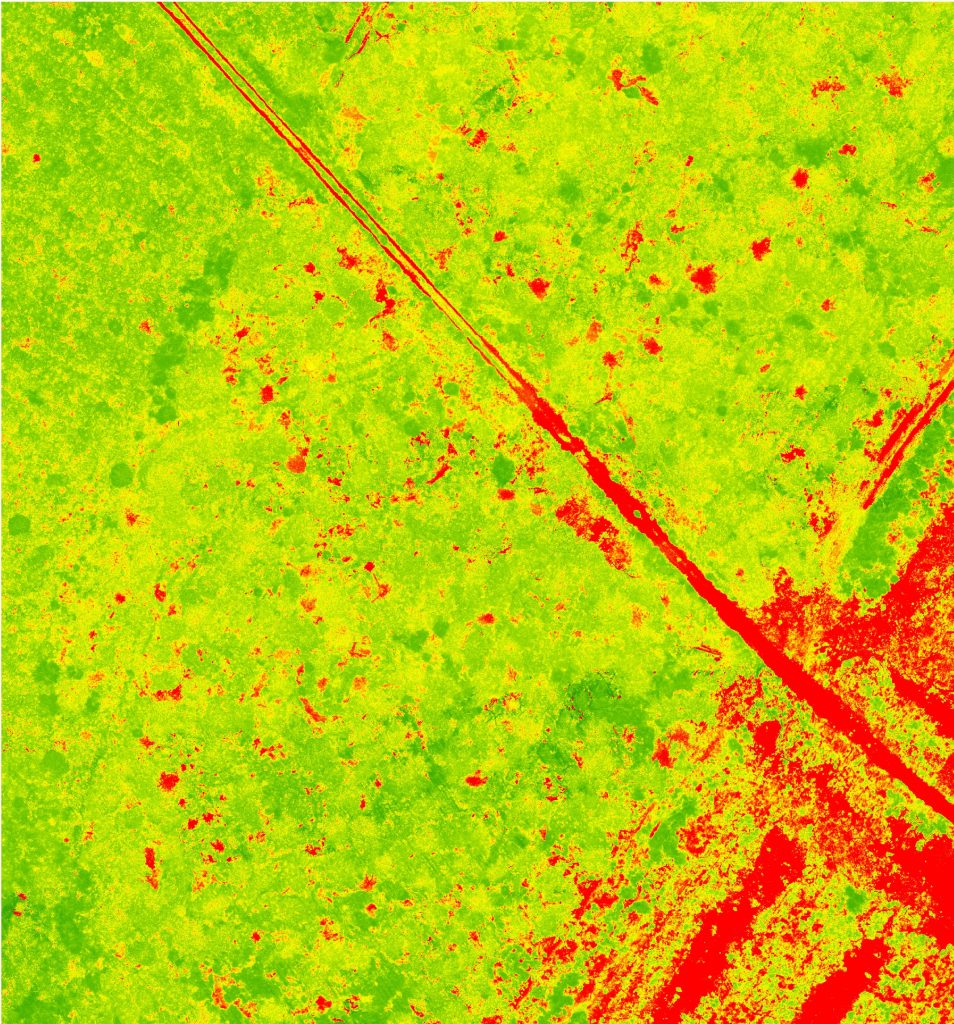Multi-spectral imaging captures image data at specific frequencies across the electromagnetic spectrum. Whilst the human eye can see a variety of colours ranging from violet to red, wavelengths can be shorter (ultraviolet) or longer (infrared), which are invisible to the naked eye. These invisible wavebands are very indicative of the characteristics of the soil, plants and crops, which make them extremely useful in all types of vegetation analysis.
Using a drone to capture these images is advantageous to other methods such as satellite images or manned aircrafts; a drone is less likely to be hindered by clouds or atmospheric conditions; the images can be captured at specific times of day when they can give more effective readings; and it is a far more cost-effective way of taking the images.
Using the Micasense Altum sensor mounted on a DJI Inspire 2 we are able to capture multi spectral imagery.The Altum sensor captures six bands blue, green, red, red edge, near infrared (NIR) and thermal all during the one flight. Images are processed using Agisoft Metashape Professional.
Data can be supplied as separate bands or RGB, composite infra red or composite red edge. For further analysis the data can also be supplied as NDVI (Normalized Difference Vegetation Index) or NDRE (Normalized Difference red edge).
What is NDVI and NDRE?
NDVI and NDRE are spectral indices constructed from a combination of two distinct frequencies of light. NDVI is built up from a combination of visual red light and near-infrared (NIR) light. NDRE uses a combination of NIR light and a frequency band that sits on the transition region between visual red and NIR light — hence the name “Red Edge”.
NDVI is the most common index used to indicate the density of vegetation. NDVI is calculated (NIR-Red)/(NIR+Red). It’s basically the ‘greeness’ of the plant, which shows when it is growing through the process of photosynthesis. Vegetation which is photosynthetically active absorbs more red light and reflects infrared light, whereas dead vegetation reflects more red light and less infrared light.Therefore, by using NDVI processing, we can asses the strength of vegetation.
NDRE is an index that can only be formulated when the Red edge band is available in a sensor. NDRE is calculated (NIR-RedEdge)/(NIR+RedEdge) It is sensitive to chlorophyll content in leaves (how green a leaf appears), variability in leaf area, and soil background effects. NDRE is a better indicator of vegetation health/vigor than NDVI for mid to late season crops that have accumulated high levels of chlorophyll in their leaves because red-edge light is more translucent to leaves than red light and so it is less likely to be completely absorbed by a canopy.
